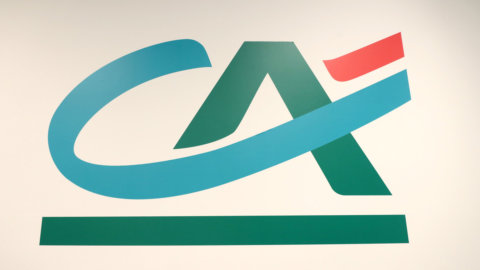Corporate lending will continue to be a key business area for banks operating in Central and Eastern Europe (CEE1) and should show a moderate recovery in the coming months. This is one of the main conclusions of the recent study “Banking in CEE – Supporting Sustainable Growth and Innovation” prepared by UniCredit's CEE Strategic Analysis. In recent years, business lending has gone through a phase of weakness in most CESEE countries2 apparently due to the decline in investment and, in part, to higher savings by companies. In 2015, however, loan growth accelerated in some countries. At the same time, the structure of corporate funding sources in CEE suggests that the role of debt securities could become more important. EU exports and funds should offer new business opportunities for banks in the region. “According to forecasts, the economic framework in which Central and Eastern European banks operate should remain positive overall.
In most of the countries in the region we will see robust economic growth in both 2016 and 2017,” said Carlo Vivaldi, Head of CEE Division at UniCredit. According to UniCredit Research, CESEE's real GDP growth is expected to reach 3,2% this year and 3,3% next year, after 3,5% in 2015. For CEE, the percentages of growth will be 1,3% and 2,6% respectively, after 0,4% in 2015. For 2016, economic growth is also expected to extend to all CEE countries. 1 The CEE region includes Bosnia, Bulgaria, Croatia, Poland, the Czech Republic, Romania, Russia, Serbia, Slovakia, Slovenia, Turkey, Ukraine and Hungary. 2 Central and South Eastern Europe (CESEE) is the CEE region excluding Russia, Turkey and Ukraine. “After the global financial crisis of 2008, the residual financing needs for companies in CESEE turned positive again, reflecting modest financing requests due to the decline in investments and, in part, to the growth in savings,” said Giorgio Marrano, Deputy Head of CEE Strategic Analysis of UniCredit.
In Bulgaria, for example, in the period 2009 – 2014 the increase in gross savings achieved by companies as a fraction of GDP increased to 20,2% compared to 15,5% in the previous period 2004 – 2008, while in Hungary this value is which rose on average from 14,1% to 17,6%. While not all CESEE countries showed growth in companies' gross savings, the decrease in investments was instead generalised. It is expected that as the recovery progresses, corporate lending will also pick up and regional laggards will improve as well. While lending is expected to remain the primary source of corporate finance in CEE, there is room for debt securities to take on a more prominent role. “In recent years, we have observed that in countries such as the Czech Republic, Poland and Slovakia the share of debt financing has increased slightly.
However, the share remains low in most countries,” noted Carlo Vivaldi. On average, the share of debt securities in corporate lending stands at 8% in CESEE, compared with 10% in Western Europe and 43% in the USA. The Czech Republic, Poland and Slovakia already rank above the CESEE average. The growth of exports and an improved absorption capacity of EU funds could generate further business opportunities for the corporate divisions of the banks. Indeed, in most CEE countries, exports represent a significant fraction of GDP, higher than that of the euro area and the global average. As the euro area is the region's largest trading partner, exports are expected to register robust growth rates, above the average in most CEE countries in both 2016 and 2017. EU funds are an important source of financing for CEE economies3 and banks provide advisory, co-financing and financial intermediation services. In the current programming period 2014 – 2020, the European Commission has allocated over 200 billion euros to CEE countries under the European Structural and Investment Funds. Around €117 billion is earmarked for six CEE countries: Bulgaria, Croatia, the Czech Republic, Romania, Slovakia and Hungary.
Of the funds allocated, 20%, equal to 23 billion euros, are intended for financing the private sector, in which the banks are more involved. “About 3,5 billion euros will be implemented through credit lines approved by UniCredit”, estimates Carlo Vivaldi, Head of CEE Division of UniCredit. UniCredit reinvests €13bn in organic growth of CEE business UniCredit sees itself as a strategic and long-term investor in Central and Eastern Europe and intends to develop its commercial activities in the region in both the corporate and retail segments. Since 2007, the CEE Division has reinvested a total of 13 billion euros in pre-tax profit in the region. In 2015, the banking group acquired over 1,2 million new customers in all CEE countries in which it operates and aims to strengthen the customer base by a further million a year until 2018. Over the same period, CEE CIB it intends to increase the number of corporate customers by about 10.000 companies a year. According to the Strategic Plan, UniCredit will invest 1,2 billion euros in digitization with the aim of responding to new trends in customer behavior and reducing costs. The number of Internet banking users is expected to double from the current 5 million to 10 million, while the number of mobile banking users is expected to grow from the current million to 7 million over the next three years. The volume of CEE loans is expected to grow by €20bn and reach €106bn in 2018.
“We are fully committed to the new Strategic Plan and its implementation is fully on schedule, including with regard to the planned transfer of CEE stakes from Vienna to Milan by the end of 2016. With this transaction, we intend to lay the foundations for an even leaner governance structure and even more efficient capital and liquidity management within the Group”, underlined Carlo Vivaldi. 3 This group includes some of the countries that joined the EU in 2004 and 2007, namely Bulgaria, Croatia, Poland, the Czech Republic, Romania, Slovakia and Hungary. UniCredit is the leading banking group in Central and Eastern Europe both in terms of network, total assets and geographical diversification. The bank has a widespread network of approximately 3.000 branches in 13 countries which generates approximately a quarter of total revenues. In CEE UniCredit serves more than 26.000 international corporate clients. In Germany, Italy and Austria, 2 out of 3 international corporate clients operating in the CEE are clients of UniCredit International Centres. The banking group has many years of consolidated experience in the management of programs with state and community funds in the CEE region, with which it has generated credit lines for over 2 billion euros dedicated to EU-funded projects and supported other agreements worth more than 1,3 .2007 billion euros subscribed with the European Investment Fund in the first programming period 2013 – 8.000. UniCredit thus supported over XNUMX companies in the EEC, mainly SMEs, with EU funds and financial instruments.





